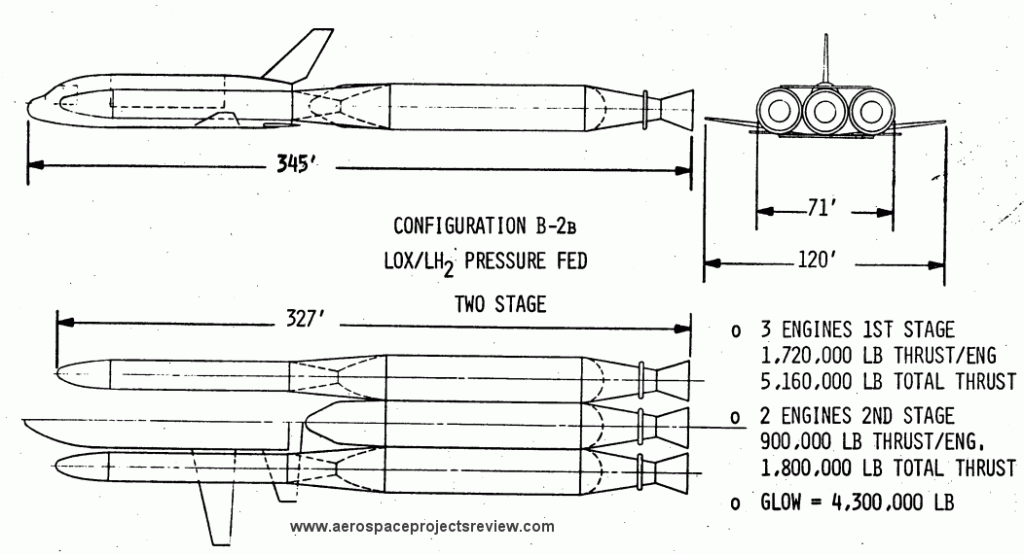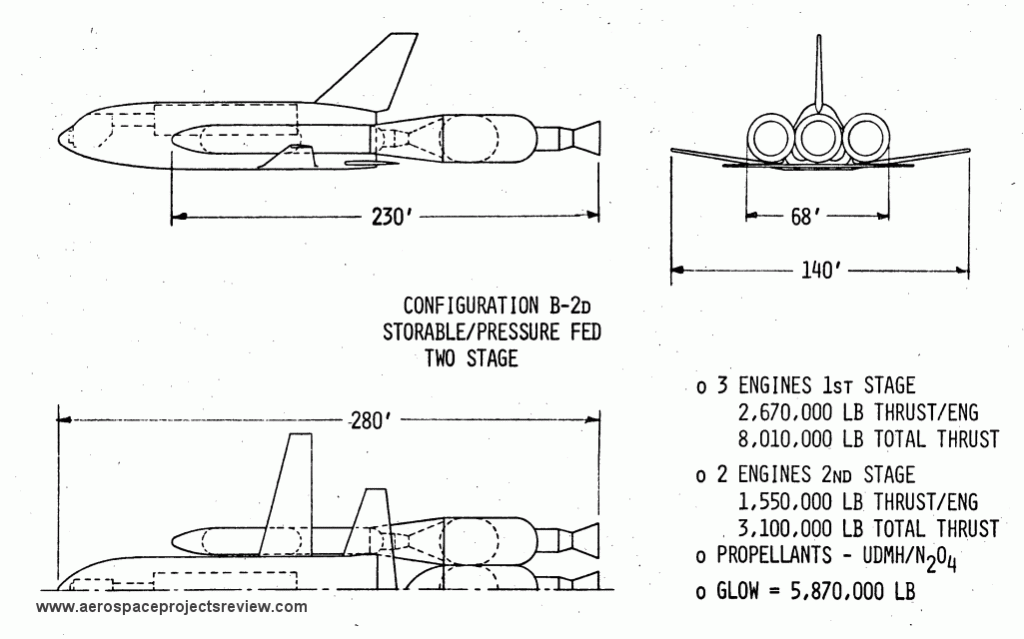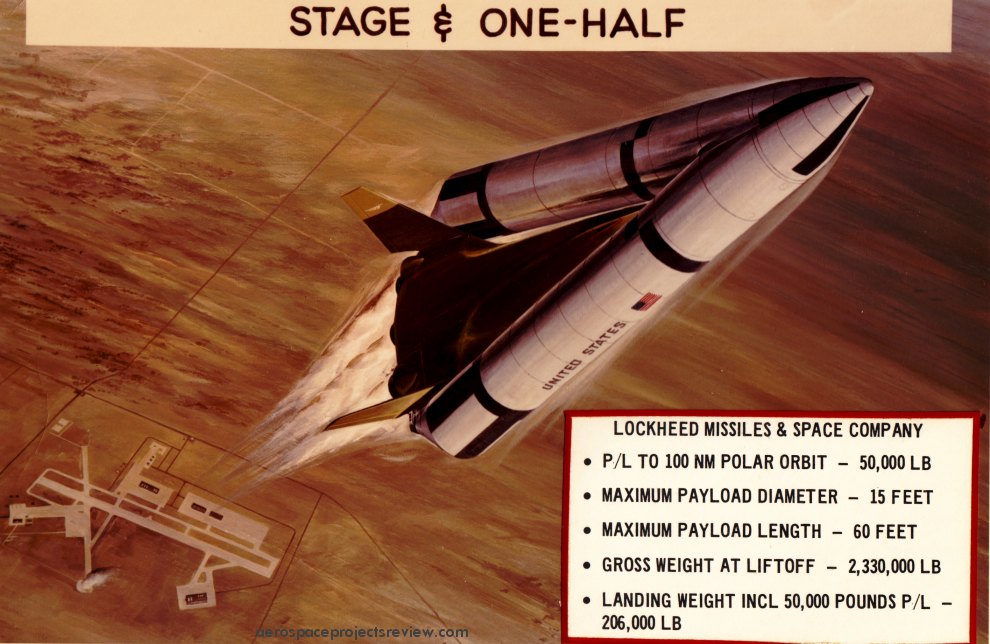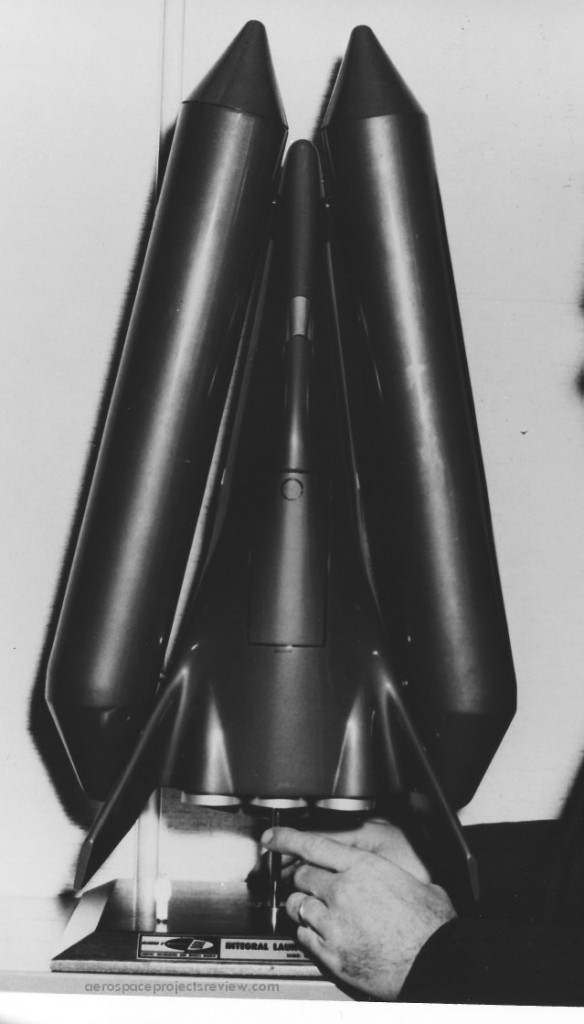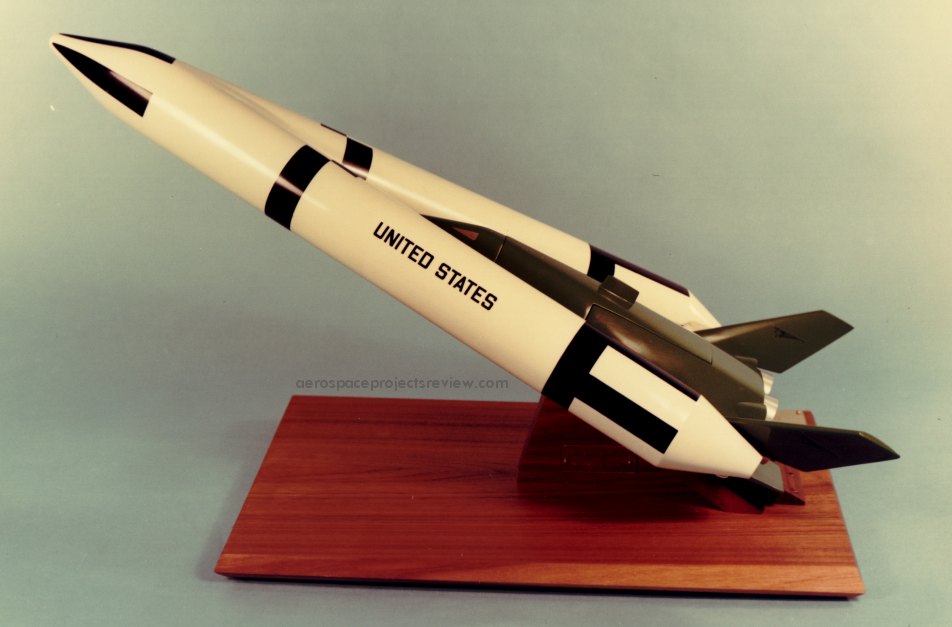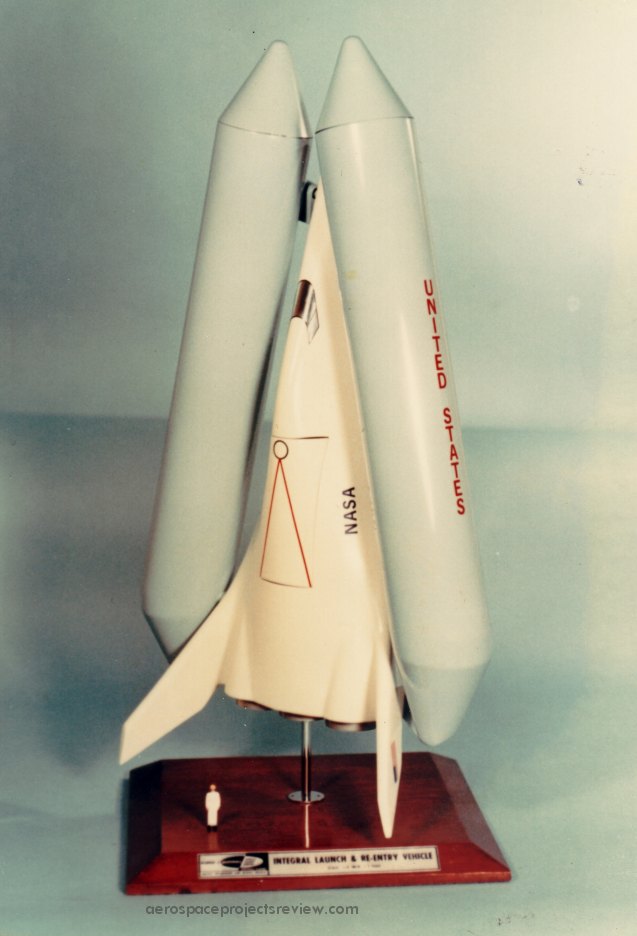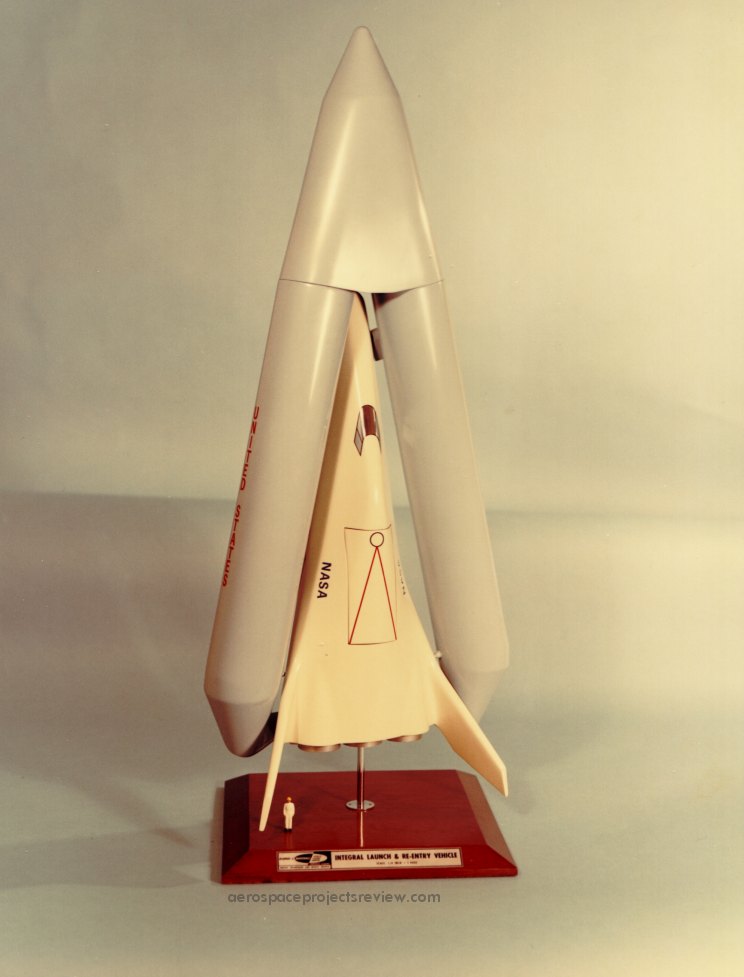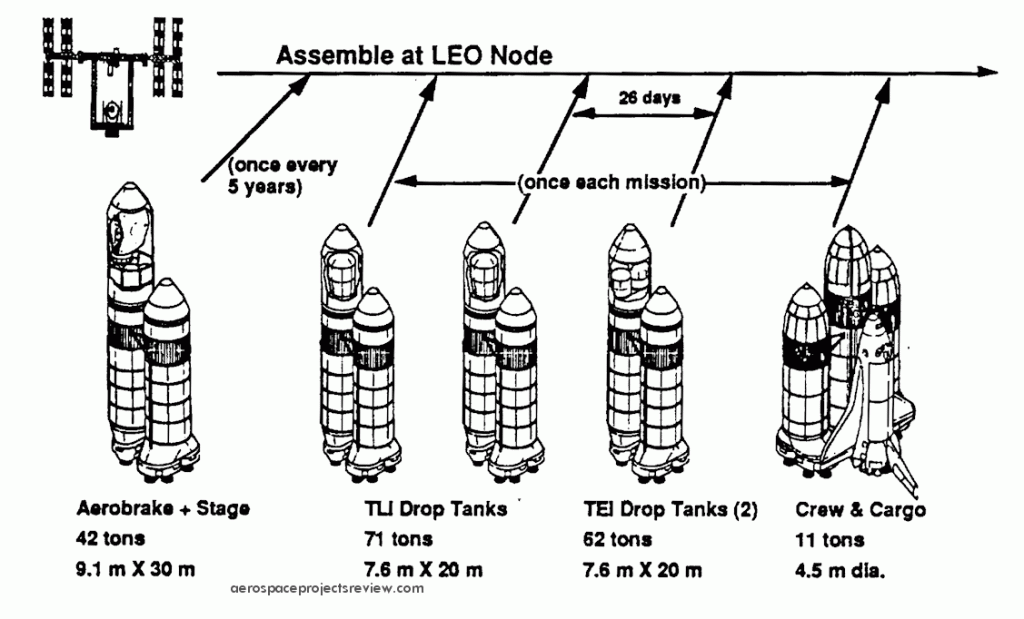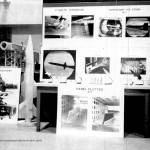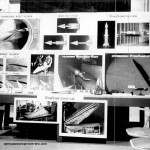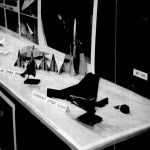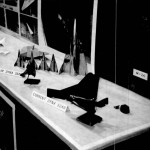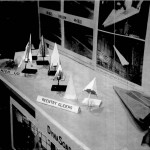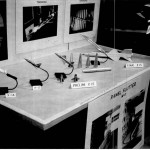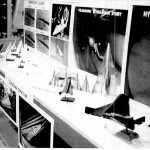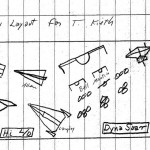A Grumman alternate Space Shuttle concept with a low cross range orbiter and a trio of 156-inch diameter solid propellant rockets for the first and second stages. The orbiter itself was stuffed with liquid hydrogen and liquid oxygen tanks; even so, the high density of the solid rockets meant that the vehicle as a whole was remarkably compact.
A Grumman alternate Space Shuttle concept with a low cross range orbiter and a series of pressue-fed storable-propellant rockets for the first and second stages. Pressure-fed boosters like this are heavy and relatively low-performance, but also relatively simple and cheap. The heavy construction required for the large high-pressure tanks makes them readily recoverable and refurbishable.
Artwork (via the NASA HQ History Office) of the Lockheed STAR Clipper. This was an early stage-and-a-half concept with a reusable orbiter and expendable propellant tanks. Vastly more info on this is available in APR issue V3N2.
Another photo (via the NASA HQ History Office) of the Lockheed STAR Clipper. This was an early stage-and-a-half concept with a reusable orbiter and expendable propellant tanks. Vastly more info on this is available in APR issue V3N2.
Another photo (via the NASA HQ History Office) of the Lockheed STAR Clipper. This was an early stage-and-a-half concept with a reusable orbiter and expendable propellant tanks. Vastly more info on this is available in APR issue V3N2.
Another photo (via the NASA HQ History Office) of the Lockheed STAR Clipper. This was an early stage-and-a-half concept with a reusable orbiter and expendable propellant tanks. Note that this version does not have an aerodynamic fairing over the noses of the the propellant tanks. Vastly more info on this is available in APR issue V3N2.
A photo (via the NASA HQ History Office) of the Lockheed STAR Clipper. This was an early stage-and-a-half concept with a reusable orbiter and expendable propellant tanks. Vastly more info on this is available in APR issue V3N2.
In 1993 Boeing designed a modular heavy lift launch vehicle for a range of space launch missions. The core vehicle was based on Shuttle External Tank components, with a multitude of SSME’s at the rear (in two recoverable pods). Shown here are some basic launchers built from these components, being used to launch parts for a lunar mission into Earth orbit. The Shuttle is shown with the solid rocket boosters replaced with the new core vehicles.
From sometime around 1963, a few photos of wind tunnel models at NASA-Langley. Shown are a range of Dyna Soar models, from pre-Dyna Soar “HYWARDS” concepts to the initial Boeing 844 design to the final Boeing Model 2050E configuration.

